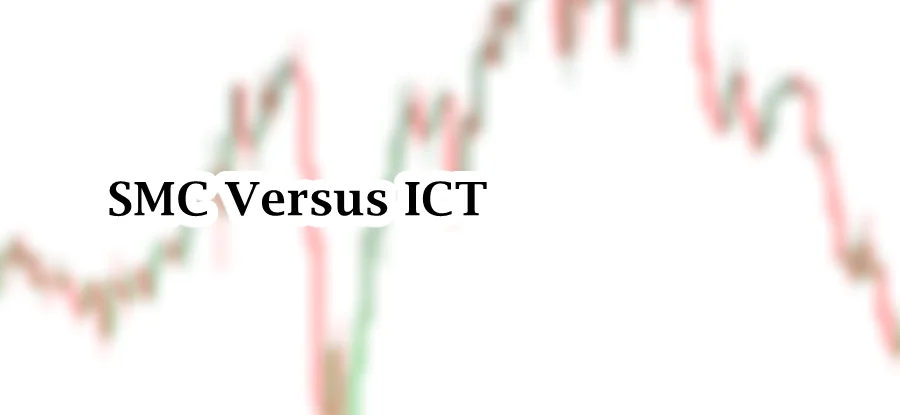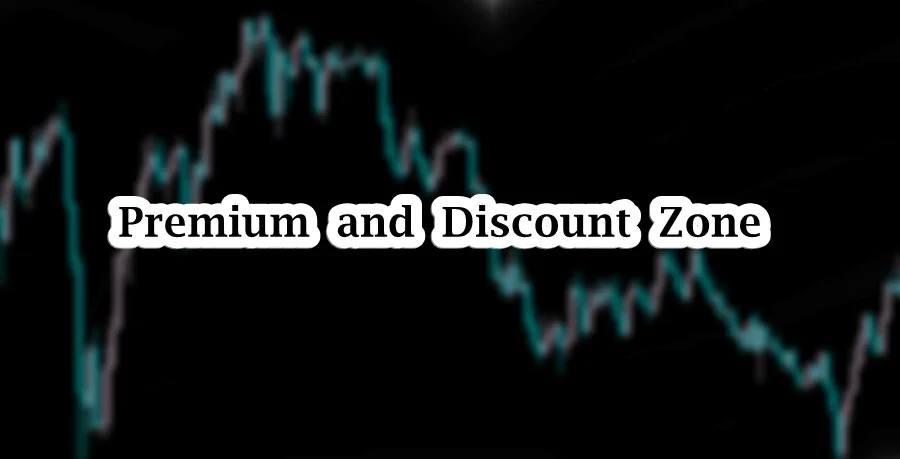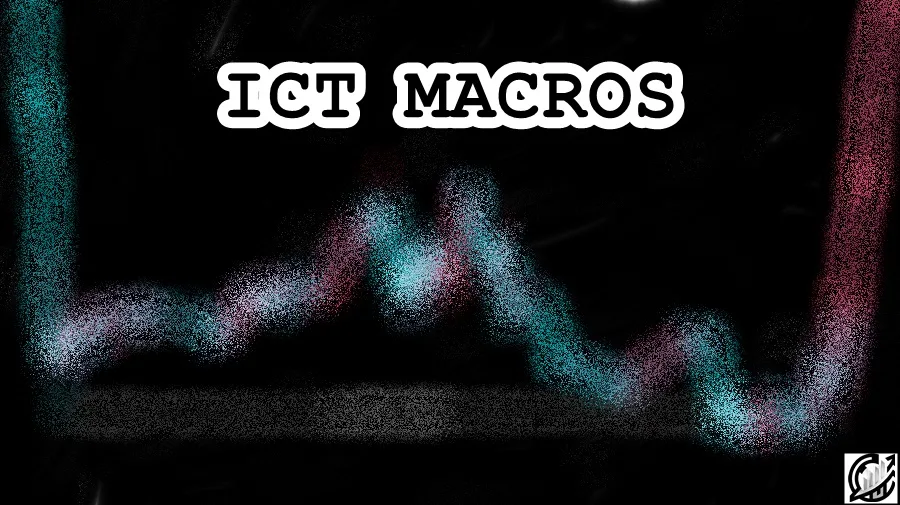
Table of Contents
Timing is key to trade execution. Although, it’s really tough to find perfect entries and exits. The only thing that we can do is to follow proper risk management strategies. ICT traders often look for entries in kill zones in trading sessions. ICT Macros are times windows used to filter trades and finding perfect entries. Macro times are not considered as trading strategies. However, it can be used to strengthen our trading strategies. Before understanding ICT Macro Times, one must have a familiarity with ICT time and price theory.
This article explores its understanding, timing of ICT Macros, use in effective trading, trading setup before and after Macro time, and timeframe for macros trading.
Understanding ICT Macros
ICT Macros are time periods within a key trading session. Micheal Huddleston introduced this concept in his 2023 mentorship. Normally, ICT Macros are period of time where the market should deliver. It can be in the from of seeking liquidity, repricing Fair Value Gap (FVG), or creating shift in market structure.
Inner Circle Trader in his recent mentorships stated clearly that ICT macros are happening in every single hour. This includes last 10 minutes of the closing hour and the first 10 minutes of the opening hour. These time in key trading session (London and New York) often coincide with liquidity hunts, and rebalancing of fair value gaps,
In ICT macros, last 10 minutes of the hour often sees market makers sweeping liquidity and preparing for the next hour’s candle. If market sweeps sell side liquidity and shift its structure, this results in shift in short term market trend. If market sweeps buy side liquidity and shift its structure, this results in shift in short market trend.
During the first 10 minutes of the hour, price frequently seeks equilibrium. Price also fulfills its algorithmic objectives and offering opportunities for entries and exits. Now, we can encounter different scenarios in trading. Both rebalancing FVG and inverting FVGs can provide opportunities in the market.
ICT Macros Times in EST
It important to avoid any kind of confusion related to universal timings. Your chart must be according to New York Time. Below is a list of ICT Macro times marked in EST:
- London Macro 1 starts from 02:33 AM and ends at 03:00 AM.
- London Macro 2 starts from 04:03 AM and ends at 04:30 AM.
- New York AM Macro 1 starts from 08:50 AM and ends at 09:10 AM.
- New York AM Macro 2 starts from 09:50 AM and ends at 10:10 AM.
- New York AM Macro 3 starts from 10:50 AM and ends at 11:10 AM.
- New York Lunch Macro starts from 11:50 AM and ends at 12:10 PM.
- New York PM Macro starts from 01:10 PM and ends at 01:40 PM.
- New York Last Hour Macro starts from 03:15 PM and ends at 03:45 PM.
These are the ideal times for traders. These time periods provide better trading opportunities in short-term trading.
ICT Macros for Effective Trading
ICT Macros are short intervals when market either seeks liquidity (buy side or sell side) or balances price imbalances such as FVG. These times are critical for traders looking to capitalize on market volatility and align their trades with algorithmic objectives. Integrating ICT Macro times into a trading strategy provides an edge especially when used along with other ICT trading concepts and models.
Before opening of an ICT Macro time, the first thing an ICT trader must do is to identify imbalances. It is important to mark any visible FVG above or below the current price on relevant timeframe. The second thing is to draw liquidity zones. Highlight buy-side and sell-side liquidity. These zones act as target for the algorithm during macro periods.
ICT macro times often introduce sharp movements in price as the algorithm sweeps liquidity and rebalance the imbalances. Market sweeps the identified zones of liquidity in the form of pending orders and stop loss clusters. During these intervals, price frequently moves to fill inefficiencies left by previous impulsive movements. This rebalances the supply and demand.
Normally, an ICT trader look for daily bias or Higher timeframe directional bias. However, no bias is required in this trading strategy. Trading ICT macros require price direction for specific interval. This is because this strategy is used mostly for scalping. If price takes sell-side liquidity first, it often moves upward to seek buy-side liquidity or fill imbalances. In contrast, if price takes buy-side liquidity first, it may move downward to target sell-side liquidity or fill the unfilled fair value gaps.
ICT Trading Setups and ICT Macros
Trading setups are not dependent upon ICT Macro times. A sharp ICT trader consider the timings important but do not limit their trades on Macro timings. Setups can form before or during ICT Macros.
Setups Before ICT Macros
Trading setups can form before an ICT Macro. When it happens, the anticipated price movement aligns with the increased volatility that these intervals bring. ICT Macros often act as catalyst. It propels the price toward predefined liquidity zone or targets. For example, if a setup includes a fair value gap or an Order Block near a liquidity zone, the ICT Macro’s volatility can cause a swift price move to fill the imbalance or sweep liquidity.
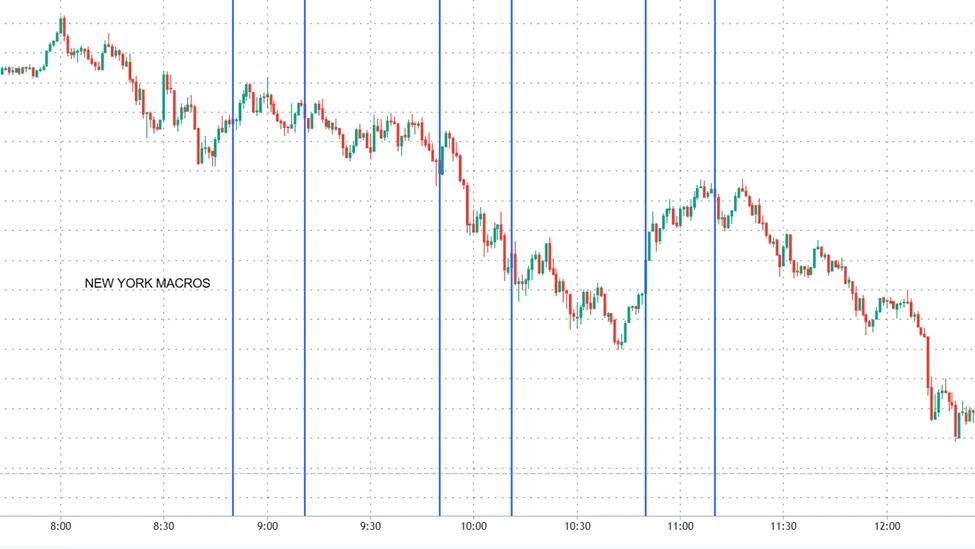
Pre-Macro ICT trading setups provide opportunities with minimal risk. These trader entries are clean. By identifying liquidity levels and imbalances in advance, traders can align their entries to take advantage of the algorithm’s movements during the macro time. This approach is particularly effective when used in conjunction with other ICT concepts, such as Break of Structure (BOS) or Change of Character (CHOCH).
Setups During ICT Macros
Sometime trade setups emerge precisely within the ICT Macro window. In such cases, price action during the macro can immediately validate the setup and lead to a rapid achievement of the target. For example, a liquidity sweep at the start of an ICT Macro may result in a sharp reversal, presenting both an entry signal and a quick move to the profit target within the same interval.
If a market direction is clear in lower timeframe market structure, then it becomes easy to catch high volatility moves.
Timeframes for Trading ICT Macros
ICT macros are concentrated within short intervals of time. This is the reason lower timeframes are best suited for identifying setups and executing trades. These smaller timeframes provide granular details of price movement. It allows traders to align closely with algorithmic actions occurring during macro windows. Analysis on slightly higher timeframe and execution on lower timeframes improve precision.
The 15-minute timeframe is ideal for preparing to trade ICT macros. It offers a balanced view of price action. With this timeframe, it becomes easy for identifying market direction. This tells us weather market is trending, ranging, or preparing to reverse. Liquidity zones and imbalances of this timeframe are likely targets for the algorithm.
For trade execution, lower timeframe like 5-minute, 3-minute, or 1-minute are most effective. These timeframes provide finer detail about liquidity sweep, and structural level breaks. Enter near imbalances or Order Block and place stop-loss.
Here is the real example of US 30:
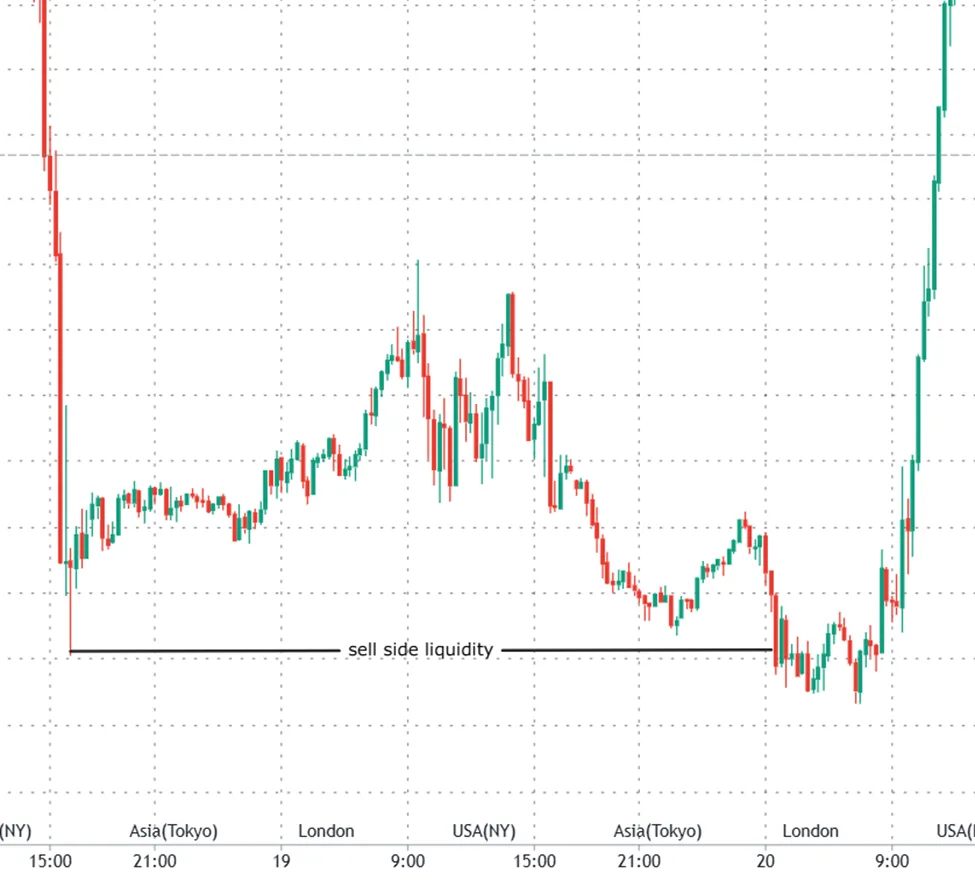
It is a chart of US 30. Here market is clearly in downtrend on 15 min timeframe. Market sweeps sell side liquidity.
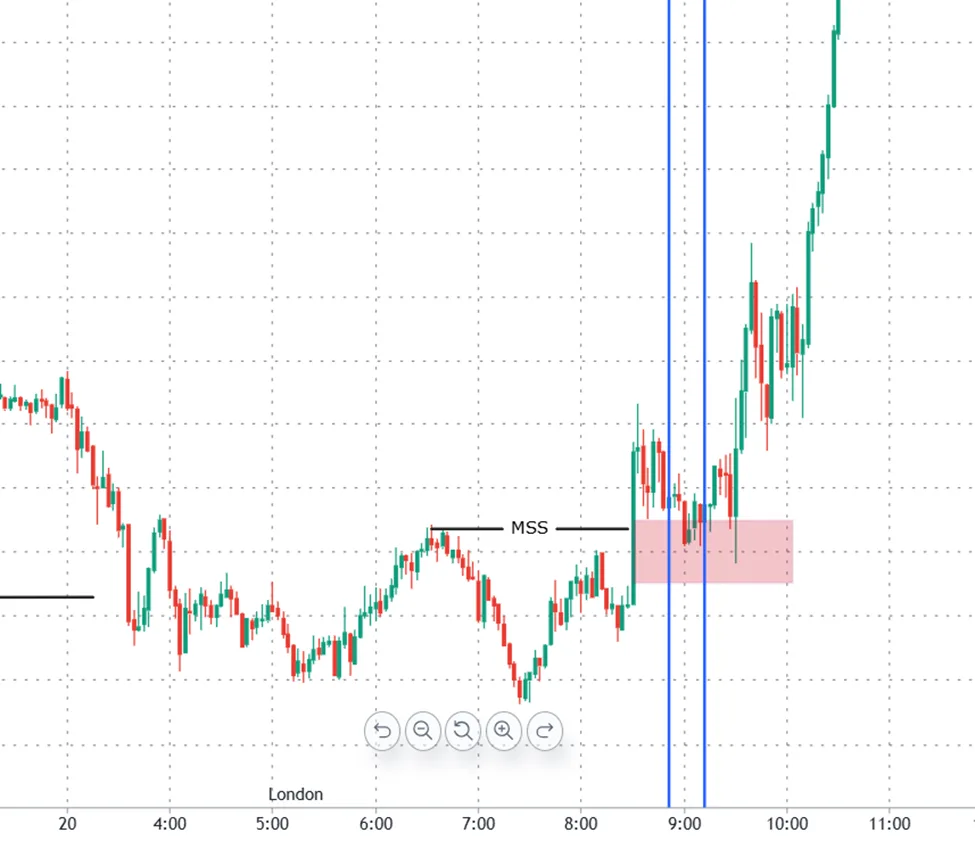
Here is the 3-minute timeframe of the same chart. There is a proper Market structure shift before ICT New York Macro, and then market fills the unfilled FVG.
Final Note
In ICT trading, ICT Macros provide high-probability opportunities for traders. However, in trading, these concepts do not guarantee success in trading. Success depends on other non-technical aspects of trading. A trader must master control his/her emotions and master trade execution which requires patience and experience.
Trading involves significant financial risk and not suitable for all investors. Past price action is used to get insights for future price action but does not guarantee future results. It would be better to trade with the funds that you can afford to lose. Seek professional advice before investing in any financial asset.
Frequently Asked Question (FAQs)
What are ICT Macro Times?
ICT Macros are times (especially short interval of time) during which price seeks liquidity (it can be buy side or sell side) or balance price imbalances such as FVGs. These time intervals are high-impact windows of time that often trigger sharp price movement.
Why to trade trading ICT Macros?
Trading ICT Macros allows traders to align with algorithm-driven market behaviors during volatile timeframe. Market often has the momentum for liquidity sweep or rebalancing imbalance during these time intervals.
What are the best timeframes for trading ICT Macros?
15-min timeframe is used for identifying market direction, liquidity zones and imbalances. After that shift to a lower timeframes like 5-min, 3-min and 1-min for precise trade execution and monitoring price behavior within macro intervals.

I’m Aatiq Shah, a dedicated forex and crypto market practitioner with three years of hands-on experience. Currently, I’m working as a Financial Manager. My journey in the world of finance has equipped me with the skills and knowledge needed to navigate the complexities of the forex and crypto markets.
